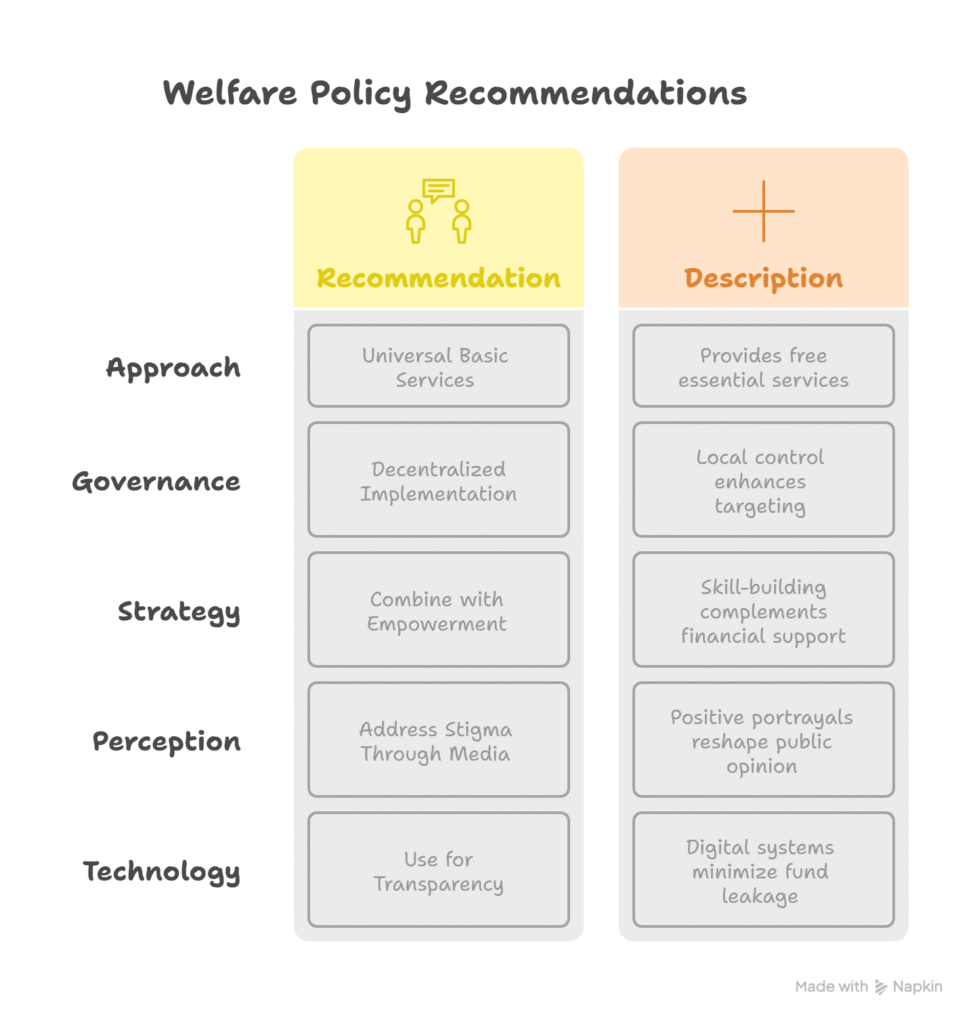Introduction on Government Welfare Schemes
Government welfare schemes are designed to reduce poverty, inequality, and social exclusion by providing financial aid, healthcare, education, and employment opportunities to marginalized populations. These programs are often justified on the grounds of social justice, economic stability, and human rights. However, their effectiveness remains a contentious issue. From a sociological perspective, welfare schemes must be evaluated not only in terms of economic outcomes but also in relation to social stratification, power dynamics, and institutional biases.
This article examines the effectiveness of government welfare schemes through a sociological lens, analyzing their impact on social structures, class disparities, and long-term societal change. It explores key theories, empirical evidence, and critiques to assess whether these programs genuinely uplift disadvantaged groups or merely perpetuate dependency and bureaucratic inefficiencies.

Theoretical Perspectives on Welfare Schemes
1. Functionalism: Welfare as Social Stability
Functionalist theorists, such as Émile Durkheim and Talcott Parsons, argue that welfare schemes play a crucial role in maintaining social order. They view poverty and inequality as dysfunctions that threaten societal equilibrium. Welfare programs, in this view, act as mechanisms to integrate marginalized groups into the economic system, ensuring stability and cohesion.
From this perspective, welfare schemes are effective if they:
- Reduce crime and social unrest by providing basic necessities.
- Enhance productivity by improving health and education.
- Reinforce social solidarity by demonstrating state responsibility toward citizens.
However, critics argue that functionalism overlooks how welfare systems can reinforce dependency rather than empowerment.
2. Conflict Theory: Welfare and Power Dynamics
Conflict theorists, inspired by Karl Marx and Max Weber, argue that welfare schemes are tools used by the ruling class to pacify the poor and maintain capitalist dominance. They suggest that:
- Welfare programs are often inadequate, designed to prevent revolt rather than eliminate inequality.
- Bureaucratic control over welfare creates a power imbalance, keeping recipients in a subordinate position.
- Corporate interests influence welfare policies, ensuring that labor remains cheap and exploitable.
For instance, means-tested welfare (where benefits are granted based on income) can stigmatize recipients, reinforcing class hierarchies rather than dismantling them.
3. Symbolic Interactionism: Perceptions and Stigma
Symbolic interactionists focus on how welfare recipients are perceived and how these perceptions shape their experiences. Studies show that:
- Welfare beneficiaries are often stereotyped as “lazy” or “undeserving,” leading to social stigma.
- Bureaucratic procedures (such as invasive eligibility checks) can dehumanize recipients, reducing self-esteem.
- The labeling effect may discourage individuals from seeking welfare even when they qualify, perpetuating poverty.
This perspective highlights how welfare schemes, despite their material benefits, can reinforce negative social identities.
Empirical Evidence: Successes and Failures
1. Success Stories
Several welfare programs have demonstrated positive sociological impacts:
- Brazil’s Bolsa Família: A conditional cash transfer program that reduced poverty while improving school attendance and healthcare access. Studies show it empowered women by giving them direct control over funds.
- India’s MGNREGA (Mahatma Gandhi National Rural Employment Guarantee Act): Provided employment to rural laborers, reducing distress migration and enhancing bargaining power for workers.
- Scandinavian Welfare States: Universal healthcare, education, and unemployment benefits have led to high social mobility and lower inequality.
These cases suggest that well-designed welfare schemes can enhance social inclusion and economic participation.

2. Failures and Criticisms
However, many welfare programs face structural and implementation challenges:
- Leakage and Corruption: In many developing nations, welfare funds are siphoned off by middlemen, depriving intended beneficiaries.
- Dependency vs. Empowerment: Critics argue that long-term welfare without skill development creates dependency rather than self-sufficiency.
- Exclusion Errors: Stringent eligibility criteria often exclude the most vulnerable, such as homeless individuals or undocumented migrants.
- Political Manipulation: Welfare schemes are sometimes used as vote-bank tools rather than genuine poverty alleviation measures.
Sociological Barriers to Government Welfare Schemes Effectiveness
1. Institutional Bureaucracy
Max Weber’s theory of bureaucracy explains how red tape and rigid administrative procedures can hinder welfare delivery. Complex application processes, documentation requirements, and slow disbursements discourage participation, particularly among illiterate or marginalized groups.
2. Social Exclusion and Discrimination
Welfare schemes often fail to reach:
- Ethnic minorities facing systemic discrimination.
- Women in patriarchal societies where men control household resources.
- Disabled individuals who lack access to application facilities.
Intersectional theorists like Patricia Hill Collins argue that welfare policies must account for overlapping inequalities (race, gender, class) to be truly effective.
3. Cultural Capital and Awareness
Pierre Bourdieu’s concept of cultural capital suggests that marginalized groups may lack the knowledge to navigate welfare systems. Illiteracy, lack of awareness, and distrust in government institutions prevent many from accessing benefits.
Policy Recommendations for Sociologically Informed Welfare
To enhance effectiveness, Government Welfare Schemes should:
- Adopt Universal Basic Services: Instead of conditional aid, providing free healthcare, education, and housing reduces stigma and bureaucratic hurdles.
- Decentralize Implementation: Localized governance (e.g., Panchayati Raj in India) can improve targeting and reduce corruption.
- Combine Welfare with Empowerment: Skill development programs alongside financial aid can break the cycle of dependency.
- Address Stigma Through Media: Positive representation of welfare recipients can reduce social prejudice.
- Use Technology for Transparency: Digital welfare systems (e.g., Aadhaar-linked payments in India) can minimize leakage.

Conclusion on Government Welfare Schemes
Government welfare schemes have the potential to reduce inequality and enhance social mobility, but their effectiveness depends on design, implementation, and socio-political context. A sociological review reveals that while some programs succeed in alleviating poverty, others reinforce stigma, dependency, and bureaucratic inefficiencies.
For welfare to be truly transformative, policies must move beyond economic metrics and address deeper structural inequalities, cultural barriers, and power imbalances. Only then can welfare schemes fulfill their promise of social justice and inclusive development.
Topic Related Questions on Government Welfare Schemes
5-Mark Questions on Government Welfare Schemes (Short Answer)
- Define government welfare schemes from a sociological perspective.
- How does functionalism view welfare programs?
- According to conflict theory, why do welfare schemes exist?
- What is the “labeling effect” in the context of welfare schemes?
- Name two successful welfare programs and their impacts.
- What are the main criticisms of welfare dependency?
- How does bureaucracy affect welfare distribution?
- What role does cultural capital play in accessing welfare benefits?
- How can technology improve welfare scheme transparency?
- What is the difference between conditional and universal welfare schemes?
10-Mark Questions on Government Welfare Schemes (Brief Essay-Type)
- Discuss the functionalist perspective on welfare schemes with examples.
- Explain how conflict theory critiques government welfare programs.
- Analyze the role of stigma and symbolic interactionism in welfare schemes.
- Compare the effectiveness of conditional vs. universal welfare programs.
- How do corruption and leakage affect welfare schemes in developing countries?
- Evaluate the impact of welfare schemes on women’s empowerment.
- Discuss Bourdieu’s concept of cultural capital in relation to welfare accessibility.
- Why do some welfare schemes fail to reach marginalized communities?
- How can welfare policies be made more inclusive for disabled individuals?
- Assess the role of political manipulation in welfare distribution.
15-Mark Questions on Government Welfare Schemes (Long Essay-Type)
- Critically examine the effectiveness of government welfare schemes using sociological theories. (Functionalist, Conflict, and Symbolic Interactionist perspectives)
- “Welfare schemes reduce poverty but reinforce dependency.” Discuss this statement sociologically.
- Analyze the successes and failures of welfare programs in India (e.g., MGNREGA, PDS) from a sociological perspective.
- How do structural barriers like bureaucracy, corruption, and social exclusion limit the effectiveness of welfare schemes?
- Discuss the role of intersectionality (caste, gender, class) in welfare accessibility with examples.
- Should welfare schemes be universal or targeted? Argue from a sociological standpoint.
- Evaluate the impact of digitalization (e.g., Aadhaar-linked welfare) on reducing corruption and improving efficiency.
- How can welfare policies be redesigned to promote long-term empowerment rather than short-term relief?
- Compare the welfare models of Scandinavian countries and developing nations. What sociological lessons can be learned?
- “Welfare schemes are more about political control than social justice.” Critically analyze this argument.

1 thought on “Are Government Welfare Schemes Effective? A Sociological Review”